Underwater Exosuit for Deep-Sea Exploration
Created by Phil Nuytten of the Canadian company Nuytco Research Ltd., the aluminum-alloy atmospheric diving system eliminates virtually all of the hazards associated with ocean pressure. In a matter of minutes, the suit can descend to depths up to 1,000 feet, and it has the capacity to stay there for hours — up to 50, to be exact. It ascends just as quickly, leaving the pilot unharmed and free of decompression symptoms. Compare that with the 24 hours it takes a saturation diver to ascend from that depth, plus the 10 days he or she would have to spend in a decompression chamber to fully recover, and it’s easy to see why this suit is so attractive to underwater explorers.
“Getting down to 1,000 feet is no trick,” says Nuytten, a deep-sea explorer and entrepreneur. “The problem is how do you get a joint or a suit that's rigid enough to withstand the pressure but flexible enough to work?"
Nuytten says the Exosuit is comparable to a spacesuit in maneuverability. At 6 inches in diameter, the wrist is the suit’s smallest joint — and, likely, the most critical when it comes to underwater excavation. This tiny joint is capable of withstanding 6 tons of atmospheric pressure without flinching.
While a diver is underwater in the Exosuit, he is constantly monitored by a surface operator and has full communication capabilities via six intercom systems. Topside, the operator can see and hear everything the suit is experiencing, thanks to an attached high-definition camera that produces Blu-ray-quality video to boot.
But wait, there’s more.
Should the suit’s pilot find himself in a life-threatening situation, the surface operator can take control of the machine and fly him to the surface, out of harm’s way. But going a step further, the suit is also a fully functioning ROV capable of remote-controlled missions and excavations.
Nuytten says that six suits have already been ordered (you too can have your very own Exosuit for a mere $600,000). Jean Michel Cousteau has plunked down the cash for one to use in his next deep-ocean exploratory foray. And the supersuit has been employed beneath the streets of New York, where it was used to repair corroded tunnels that supply water to the city.
Next up? The suit will descend 400 feet to the 2,000-year-old Antikythera shipwreck of a Greek island in the Aegean Sea.
Looking for more underwater innovations? We've got you covered:
The Bite-Proof Shark Suit | Tracking Great White Sharks Via App | The Latest Dive Watches
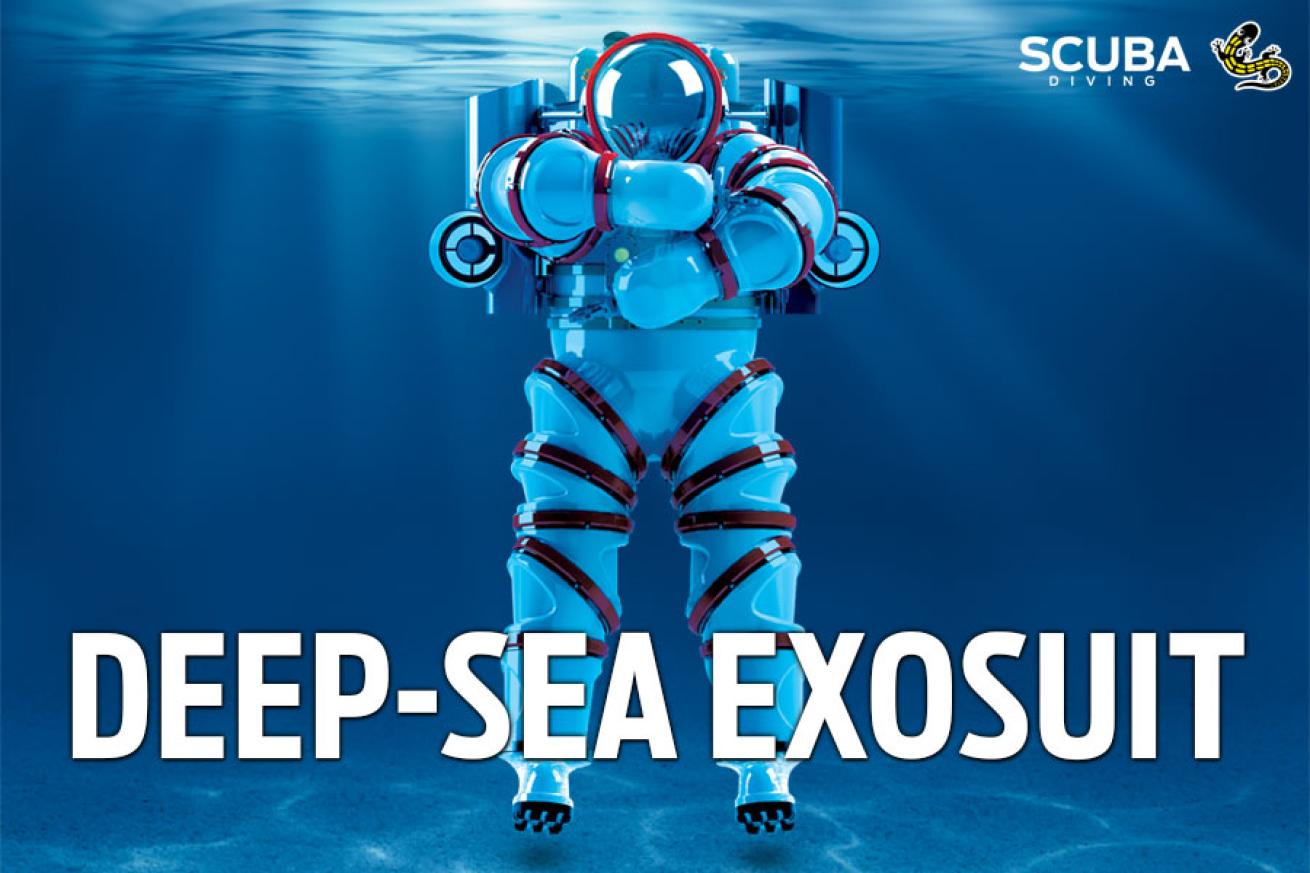
Suit courtesy Nuytco Research Ltd., Design by Monica Alberta and Alex Bean
Meet the Exosuit: a sleek, 600-pound submersible that’s revolutionizing deep-sea exploration. It’s enough to make any dive-nerd geek out and, to be frank, it’s completely bad-ass.
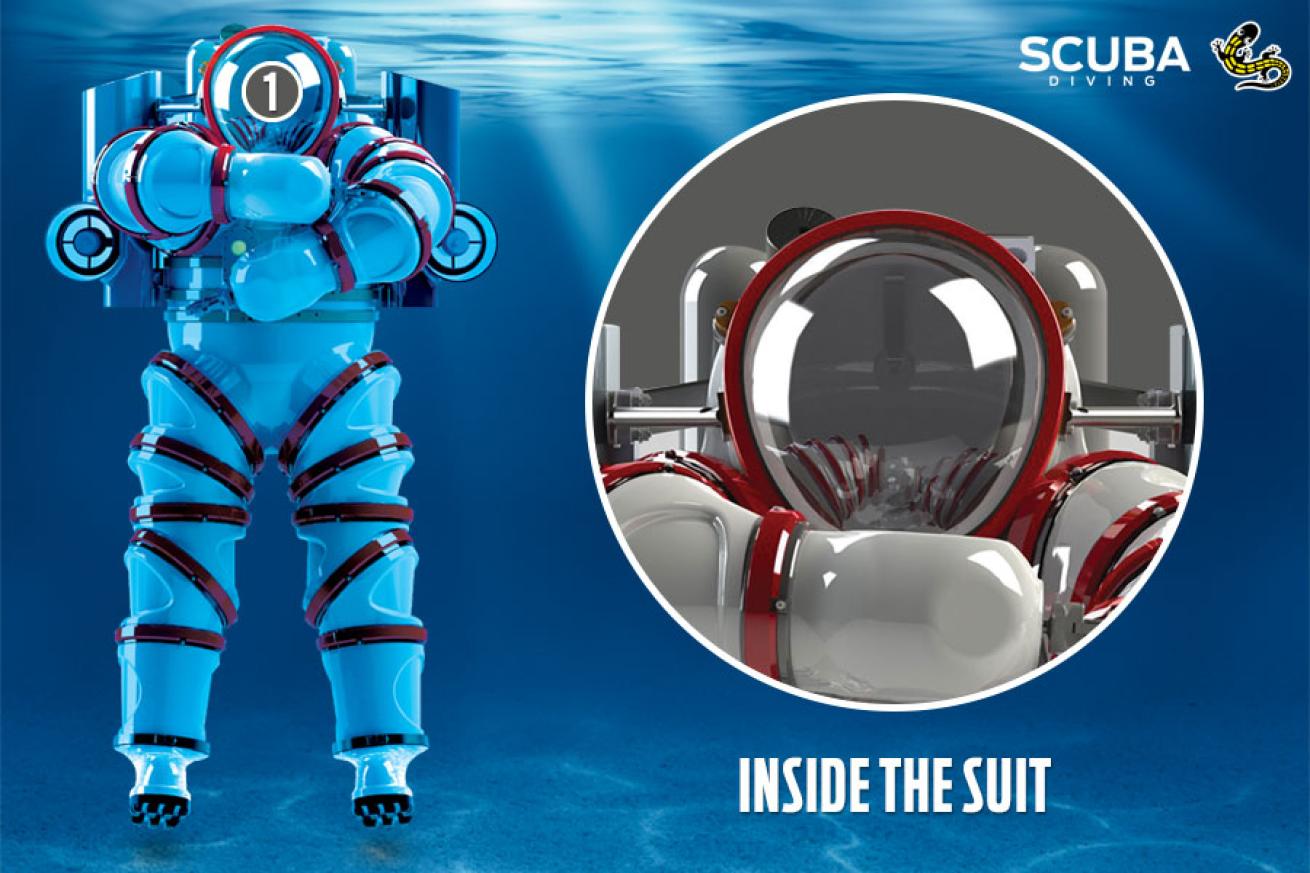
Suit courtesy Nuytco Research Ltd., Design by Monica Alberta and Alex Bean
The pilot has a field of view down to his boots, thanks to the teardrop-shaped helmet.
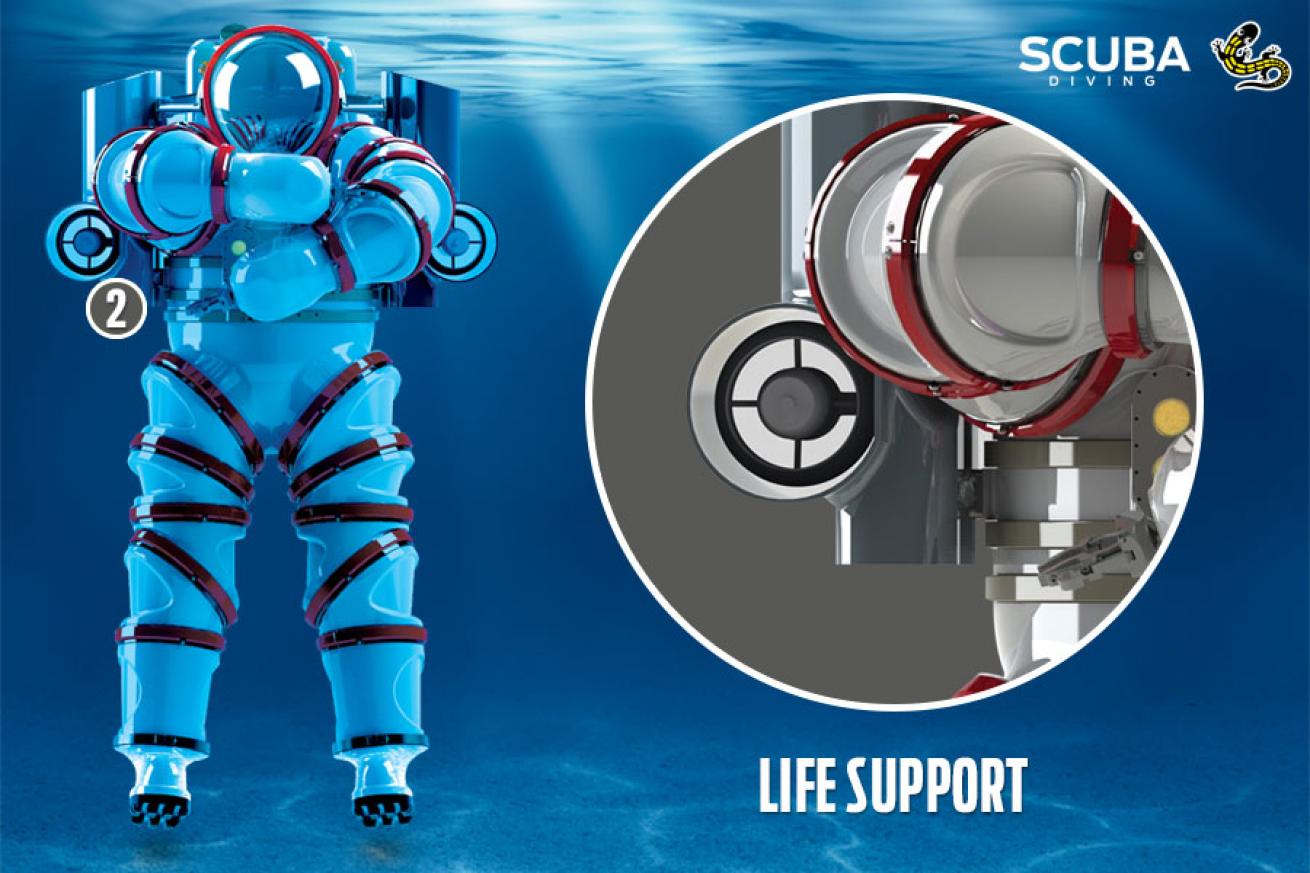
Suit courtesy Nuytco Research Ltd., Design by Monica Alberta and Alex Bean
The suit can tout two separate oxygen systems that provide 50 hours of life support, and air is recirculated and filtered by carbon- dioxide scrubbers.
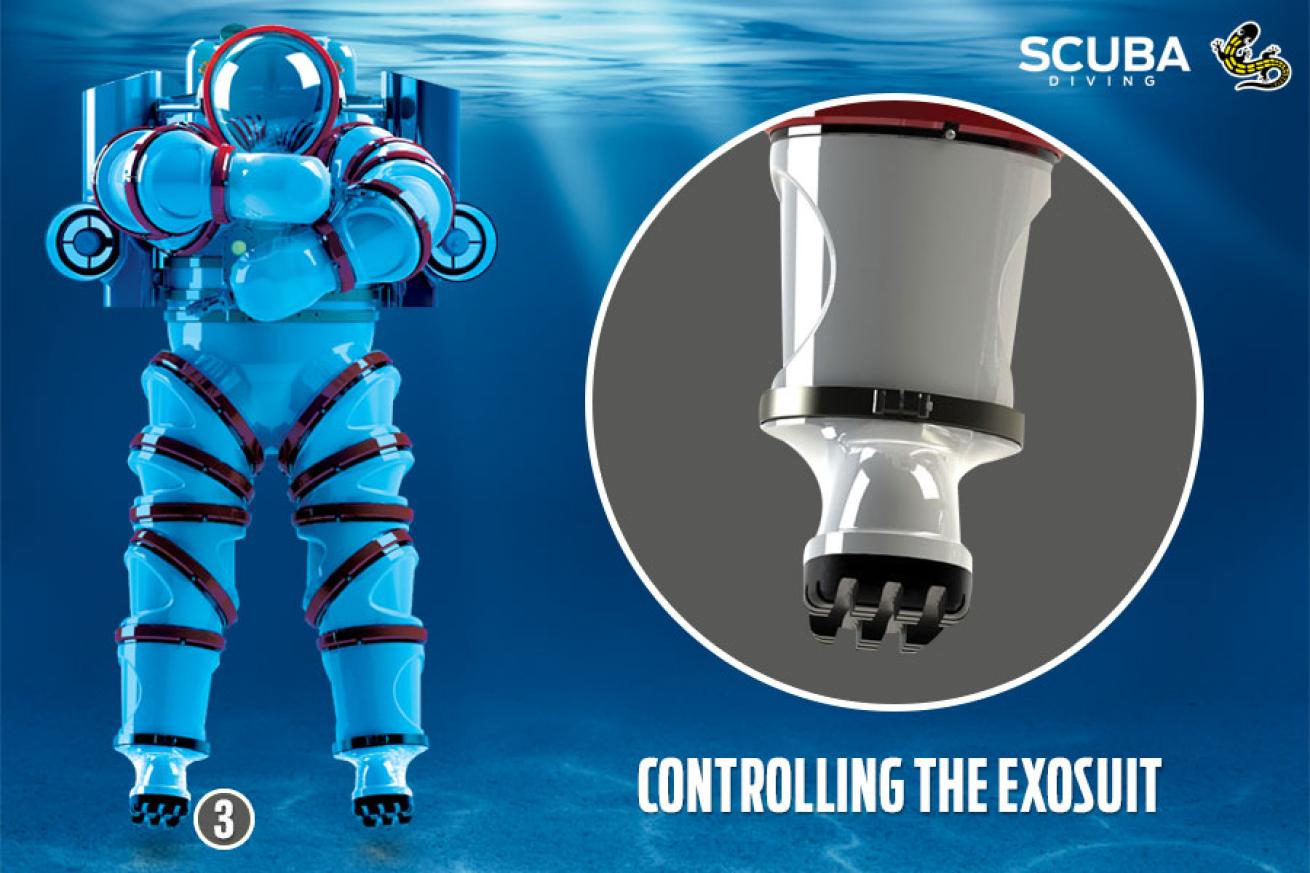
Suit courtesy Nuytco Research Ltd., Design by Monica Alberta and Alex Bean
Thrusters are controlled by foot pedals: On the right foot, pressure on the toe moves the suit forward, the heel moves backward, instep moves left, and right side moves right. On the left foot, pressure on the toe moves the suit down; the heel moves it up.
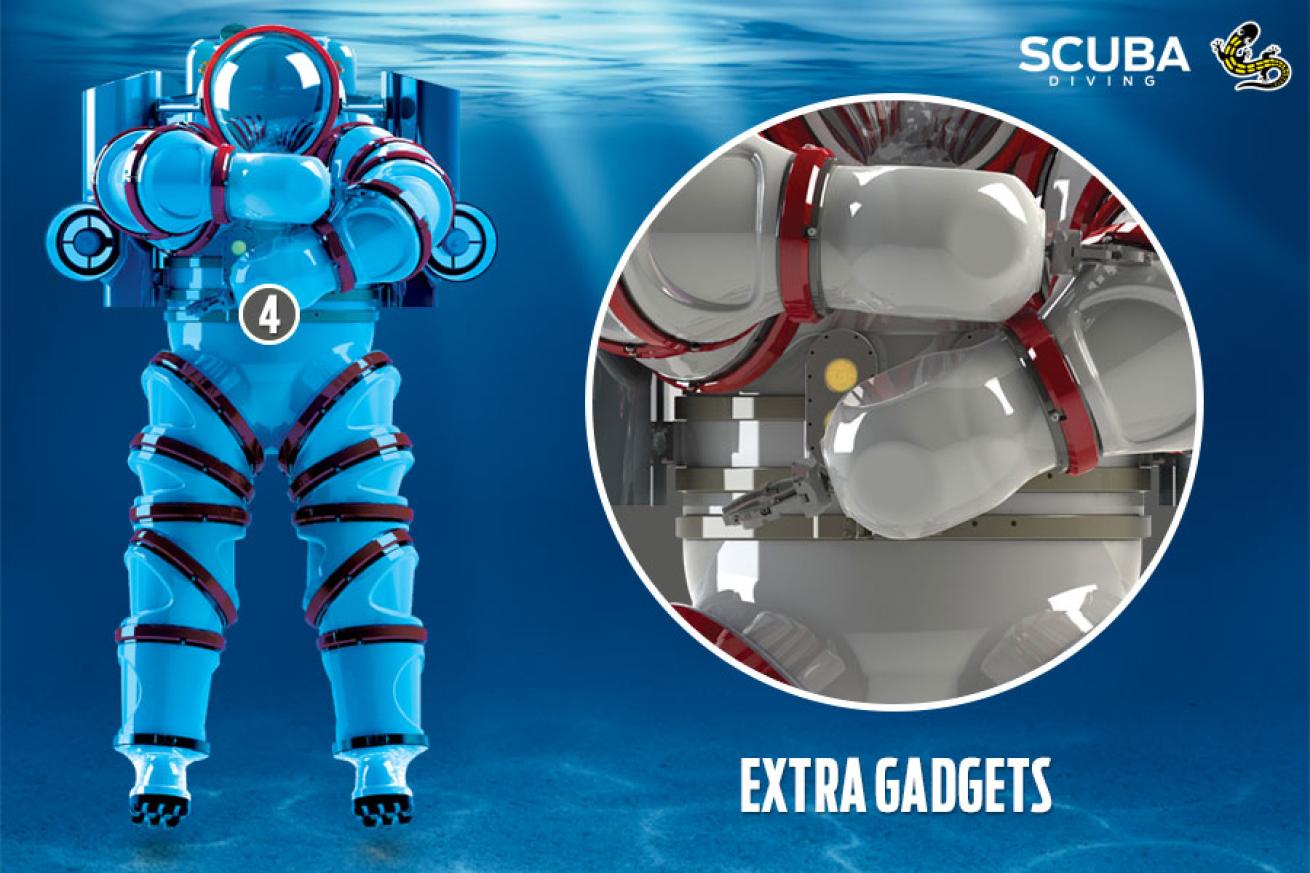
Suit courtesy Nuytco Research Ltd., Design by Monica Alberta and Alex Bean
The suit's hands have one “V” jaw to grab bulky items, and a “parallel jaw” is for delicate artifacts. It’s also equipped with a Spyderco knife and hook, and a five-pronged "pretender" (not pictured) that mimics a human hand. Other features include Imagenex 852 sonar and two 9,600-lumen Newtsun lights.
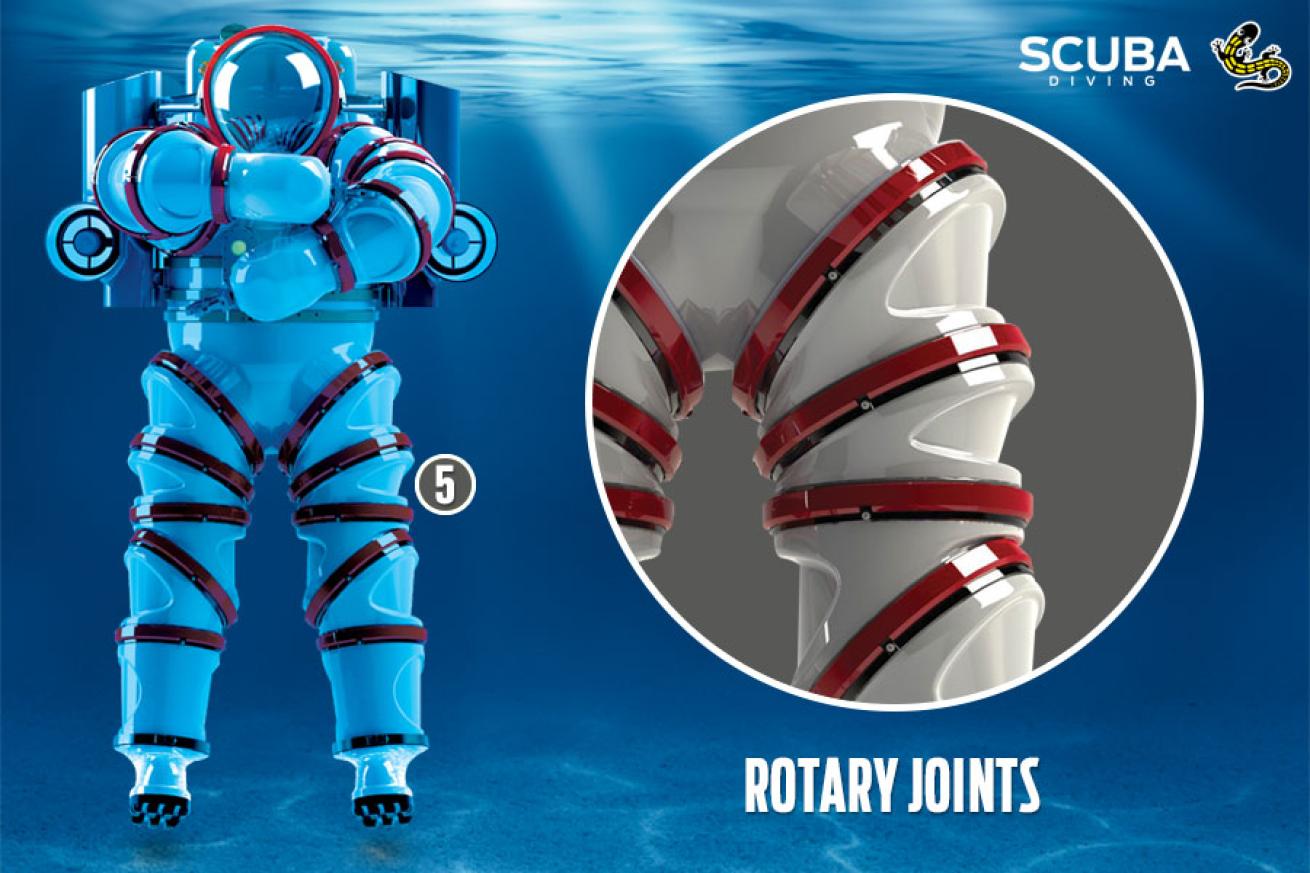
Suit courtesy Nuytco Research Ltd., Design by Monica Alberta and Alex Bean
The Exosuit has 18 rotary joints. The wrist joints, which are 6 inches in diameter, are capable of rotating 360 degrees, and the design allows the pilot to move his body relatively freely.

Scuba Diving is the complete source for the best in diving information. Get the latest in-depth information on destinations both near and far, reviews of must-have gear, breathtaking underwater photos, news on the latest technology, updates on environmental issues and more — all delivered right to your inbox!
Created by Phil Nuytten of the Canadian company Nuytco Research Ltd., the aluminum-alloy atmospheric diving system eliminates virtually all of the hazards associated with ocean pressure. In a matter of minutes, the suit can descend to depths up to 1,000 feet, and it has the capacity to stay there for hours — up to 50, to be exact. It ascends just as quickly, leaving the pilot unharmed and free of decompression symptoms. Compare that with the 24 hours it takes a saturation diver to ascend from that depth, plus the 10 days he or she would have to spend in a decompression chamber to fully recover, and it’s easy to see why this suit is so attractive to underwater explorers.
“Getting down to 1,000 feet is no trick,” says Nuytten, a deep-sea explorer and entrepreneur. “The problem is how do you get a joint or a suit that's rigid enough to withstand the pressure but flexible enough to work?"
Nuytten says the Exosuit is comparable to a spacesuit in maneuverability. At 6 inches in diameter, the wrist is the suit’s smallest joint — and, likely, the most critical when it comes to underwater excavation. This tiny joint is capable of withstanding 6 tons of atmospheric pressure without flinching.
While a diver is underwater in the Exosuit, he is constantly monitored by a surface operator and has full communication capabilities via six intercom systems. Topside, the operator can see and hear everything the suit is experiencing, thanks to an attached high-definition camera that produces Blu-ray-quality video to boot.
But wait, there’s more.
Should the suit’s pilot find himself in a life-threatening situation, the surface operator can take control of the machine and fly him to the surface, out of harm’s way. But going a step further, the suit is also a fully functioning ROV capable of remote-controlled missions and excavations.
Nuytten says that six suits have already been ordered (you too can have your very own Exosuit for a mere $600,000). Jean Michel Cousteau has plunked down the cash for one to use in his next deep-ocean exploratory foray. And the supersuit has been employed beneath the streets of New York, where it was used to repair corroded tunnels that supply water to the city.
Next up? The suit will descend 400 feet to the 2,000-year-old Antikythera shipwreck of a Greek island in the Aegean Sea.
Looking for more underwater innovations? We've got you covered:
The Bite-Proof Shark Suit | Tracking Great White Sharks Via App | The Latest Dive Watches










